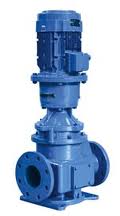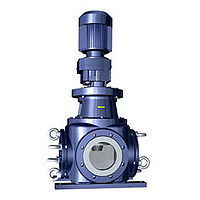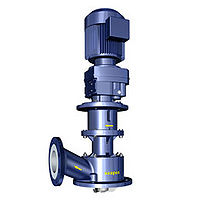Macerators
Macerators are all-purpose grinding machine, capable of breaking down many ores and other items into Dust, which can be later smelted into their respective ingots.
When Macerating Blaze Rods and Bones, each produces 5 Blaze Powder or Bone Meal respectively, which can then be condensed into the EMC of 2.5 Blaze Rods or Bones, providing for a quick and easy way to increase EMC exponentially (even faster than a power flower). This process is described in the Mass-Fab Macerator tutorial.
Because of its relatively low processing speed, the Macerator is more expensive to operate than it looks. Consider upgrading your Macerators into Rotary Macerators early.
Applications
The purpose of macerators is to provide an easy and convenient means of disposing of waste into drains and sewers. Examples of macerators are food waste disposal units and those designed for disposing of sanitary and hygiene products. Typically, they are installed and in use in commercial kitchens, care homes, hospitals, domestic properties and other premises.
Apart from applications in processing municipal and industrial waste waters, macerators are also used in a multitude of other branches of industry. They macerate the solid and fibrous components in the conveying medium, thus increasing the operating safety and service life of the downstream pumps and other machinery. The degree of maceration can be varied depending on the flow rate, the drive speed and the shear plate design and can thus be adapted to diverse application conditions.
Macerators and water resources
It is also clear that Macerators can use additional volumes of high quality drinking water which is wasted. Most people now recognise the importance of water conservation and efficiency in order to protect supplies for our future and the Government has recognised the need for households to reduce water consumption in the latest revision of the Building Regulations and in the Code for Sustainable Homes. In use, food waste disposers use water in far greater quantities than the food waste they dispose of.
Common Types
Range I
- Inline design facilitates direct attachment to the pump or installation in a piping with compact dimensions.
- Integrated heavy solids collection separator with two large cleanout openings
- Product feed optionally via three feed settings
- Flow rate: 2 m³/h – 150 m³/h | 8.8 USGPM - 660 USGPM
Range U
- Cost-efficient all-purpose design with product feed from below
- Flow rate: 2 m³/h – 150 m³/h | 8.8 USGPM - 660 USGPM
- Range U is installed universally either on vertical piping or on a supply tank with direct connection to a pump.
Video


